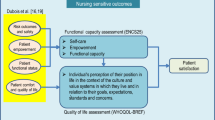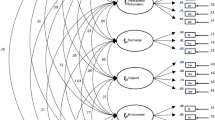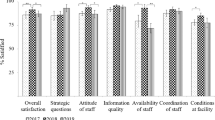Abstract
Objective:
To examine whether the method of measuring patient satisfaction influences the results.
Study Design:
All families with NICU patients discharged home alive to parent(s) were surveyed at 2 to 42 days post discharge with two parallel surveys (mailed and phone) from August 2010 to December 2011. The responses to the same five questions on each survey were recorded and subjected to statistical analysis via paired Student’s t and Pearson correlation coefficients to see whether the two surveys yielded the same population attitudes.
Result:
Eight hundred and thirteen families were included in the study. Seven hundred and sixty three (93.8%) completed the phone survey and 237 (29.2%) completed the mail in survey. Three of the five questions yielded significantly different answers between mailed and phone responses. In addition, no significant linear correlation between mail and survey could be found for the other two questions.
Conclusion:
As no linear correlation could be found between two of the five questions, a process constant mathematical value could not be identified. This indicates that mail survey and phone survey respondents have different attitudes that cannot be adjusted because of methodological measurement effects.
This is a preview of subscription content, access via your institution
Access options
Subscribe to this journal
Receive 12 print issues and online access
$259.00 per year
only $21.58 per issue
Buy this article
- Purchase on Springer Link
- Instant access to full article PDF
Prices may be subject to local taxes which are calculated during checkout

Similar content being viewed by others
References
Burroughs TE, Waterman BM, Gilin D, Adams D, McCollegan J, Cira J . Do on-site patient satisfaction surveys bias results? Jt Comm J Qual Patient Saf 2005; 31 (3): 158–166.
Burroughs TE, Waterman BM, Cira JC, Desikan R, Claiborne Dunagen W . Patient satisfaction measurement strategies: a comparison of phone and mail methods. Jt Comm J Qual Improv 2001; 27 (7): 349–361.
Jamieson S . Likert Scales: How to (Ab)use Them. Med Educ 38 (12) 2004; 1217–1218.
Norman G . Likert scales, levels of measurement and the ‘laws’ of statistics. Advances in Health Science Education 2010; 15 (5): 625–632.
Fowler FJ, Gallagher PM, Stringfellow VL, Zaslavsky AM, Thompson JW, Cleary PD . Using telephone interviews to reduce nonresponse bias to mail surveys of health plan members. Med Care 2002; 40 (3): 190–200.
Acknowledgements
We thank Providence St Vincent Medical Center and the Women’s and Children’s Health Research Center for their support during this trial. This project was supported by Providence Health and Services at the Women’s and Children’s Health Research Center in Portland, Oregon.
Author information
Authors and Affiliations
Corresponding author
Ethics declarations
Competing interests
The authors declare no conflict of interest.
Rights and permissions
About this article
Cite this article
Cheldelin, L., Dunham, S. & Stewart, V. NICU patient satisfaction: how you measure counts. J Perinatol 33, 324–326 (2013). https://doi.org/10.1038/jp.2012.115
Received:
Revised:
Accepted:
Published:
Issue Date:
DOI: https://doi.org/10.1038/jp.2012.115
Keywords
This article is cited by
-
EMPATHIC-N in a Greek-Cypriot sample: confirming its factorial structure
BMC Health Services Research (2018)



